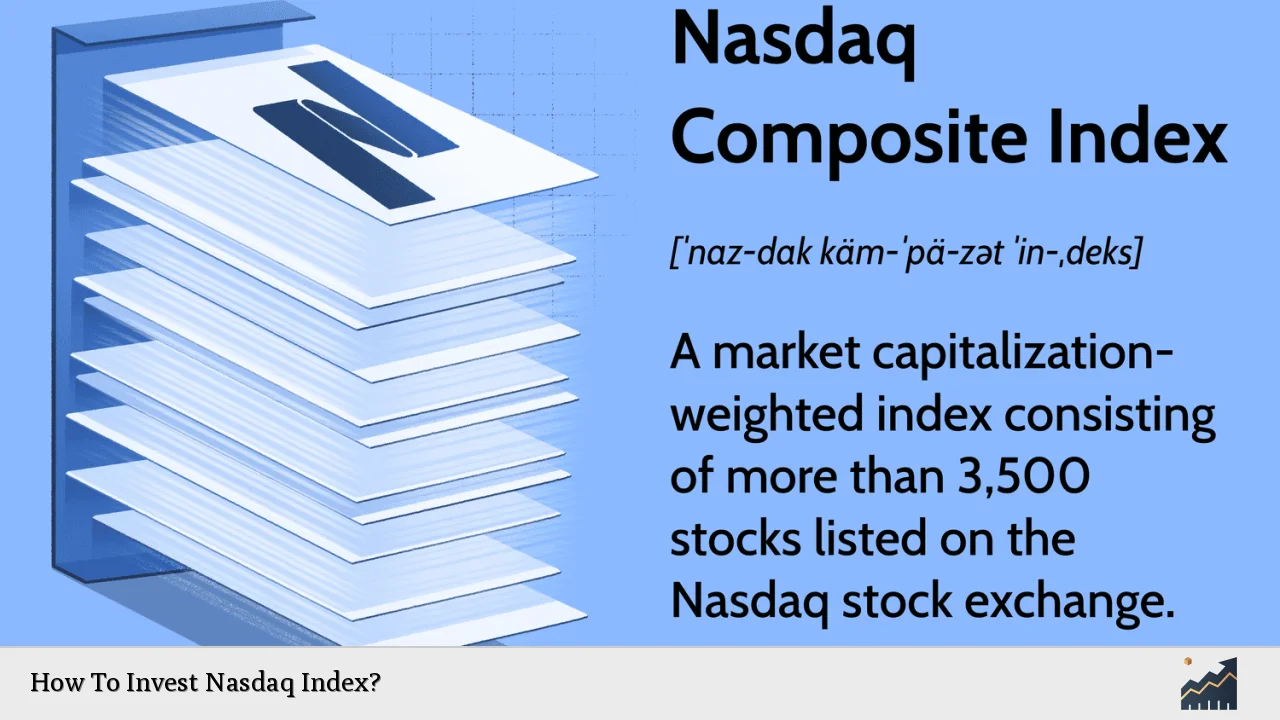Investing in the Nasdaq Index provides exposure to some of the largest and fastest-growing companies, primarily in the technology sector. The Nasdaq is home to two major indices: the Nasdaq Composite and the Nasdaq 100. The Nasdaq Composite includes over 3,700 stocks, while the Nasdaq 100 focuses on the 100 largest non-financial companies listed on the Nasdaq exchange. This concentration in tech makes it an attractive option for investors seeking growth.
Investors can access these indices through various financial instruments, including exchange-traded funds (ETFs), mutual funds, and direct stock purchases. Each method has its advantages and considerations, making it essential for potential investors to understand their options and align them with their financial goals.
| Index | Description |
|---|---|
| Nasdaq Composite | Includes over 3,700 stocks listed on the Nasdaq exchange. |
| Nasdaq 100 | Focuses on the 100 largest non-financial companies on the Nasdaq. |
Understanding the Nasdaq Indices
The Nasdaq Composite Index is a broad market index that includes a diverse range of stocks, primarily from technology, healthcare, and consumer discretionary sectors. It is weighted by market capitalization, meaning larger companies have a more significant impact on its performance. This index is often viewed as a barometer for technology stocks due to its heavy weighting in that sector.
In contrast, the Nasdaq 100 Index comprises only the largest non-financial companies listed on the exchange. This index is also market capitalization-weighted but uses a modified approach to limit the influence of extremely large companies. As a result, while both indices provide exposure to tech stocks, the Nasdaq 100 offers a more focused investment in large-cap growth firms.
Investing in these indices allows investors to capitalize on trends within technology and innovation-driven sectors. Companies like Apple, Microsoft, and Amazon dominate both indices, making them appealing for those looking for growth potential.
Ways to Invest in the Nasdaq Index
Investors have several options when it comes to gaining exposure to the Nasdaq indices:
- Exchange-Traded Funds (ETFs): ETFs like Invesco QQQ Trust (QQQ) are designed to track the performance of the Nasdaq 100. They offer an easy way for investors to buy into a diversified portfolio of stocks without having to purchase each one individually.
- Mutual Funds: Similar to ETFs, mutual funds can provide exposure to the Nasdaq indices but typically come with higher fees and less flexibility in trading.
- Direct Stock Purchases: Investors can choose to buy shares of individual companies within the index. While this allows for targeted investments, it requires more effort in terms of research and monitoring.
- Options and Futures: For more experienced investors, options and futures contracts can be used to speculate on or hedge against movements in the index.
Each investment method has its pros and cons. ETFs are generally favored for their liquidity and lower fees compared to mutual funds. However, investing directly in stocks may allow for greater control over individual investments.
Benefits of Investing in the Nasdaq
Investing in the Nasdaq offers several advantages:
- Growth Potential: The technology sector has historically outperformed other sectors due to rapid innovation and growth. Companies within the Nasdaq are often at the forefront of technological advancements.
- Diversification: While concentrated in tech, both indices include a variety of sectors such as healthcare and consumer services. This diversification can help mitigate risks associated with investing solely in tech stocks.
- Accessibility: With numerous investment vehicles available, including ETFs that trade like stocks, investing in the Nasdaq is accessible for both novice and experienced investors.
- Market Trends: The Nasdaq indices are well-positioned to benefit from macroeconomic trends such as digital transformation and increased reliance on technology across industries.
Investors should consider these benefits when deciding how much exposure they want to allocate toward Nasdaq investments.
Risks Associated with Investing in the Nasdaq
While there are many benefits to investing in the Nasdaq indices, there are also risks that potential investors should be aware of:
- Concentration Risk: The heavy weighting towards technology means that downturns in this sector can significantly affect overall performance. A few large companies can disproportionately sway index values.
- Volatility: Technology stocks tend to be more volatile than those in other sectors. Investors should be prepared for larger price swings compared to broader market indices like the S&P 500.
- Market Sentiment: The performance of tech stocks is often influenced by market sentiment and trends rather than fundamental company performance. Changes in investor sentiment can lead to rapid price changes.
Understanding these risks is crucial for any investor considering exposure to the Nasdaq indices. A well-thought-out investment strategy can help mitigate these risks while capitalizing on potential growth opportunities.
Steps to Start Investing in the Nasdaq Index
For those interested in investing in the Nasdaq Index, here are some practical steps:
1. Set Investment Goals: Determine your financial objectives, risk tolerance, and investment horizon before diving into investments.
2. Choose an Investment Vehicle: Decide whether you want to invest through ETFs, mutual funds, or individual stocks based on your preferences and risk appetite.
3. Open a Brokerage Account: Select a brokerage that offers access to Nasdaq-listed securities and set up your account. Many platforms provide user-friendly interfaces for trading ETFs or stocks.
4. Research Investments: Conduct thorough research on specific ETFs or companies within the index you wish to invest in. Consider factors such as past performance, fees (for funds), and overall market conditions.
5. Monitor Your Investments: Keep an eye on your investments regularly and adjust your portfolio as needed based on performance and changes in your financial situation or goals.
6. Stay Informed: Follow market news related to technology trends and economic indicators that may impact your investments within the Nasdaq Index.
By following these steps, investors can effectively navigate their entry into investing in the Nasdaq Index while aligning their strategies with their financial goals.
FAQs About How To Invest Nasdaq Index
- What is the best way to invest in the Nasdaq?
The best way is typically through ETFs like Invesco QQQ Trust (QQQ), which track index performance. - Is investing in the Nasdaq risky?
Yes, it carries risks due to its concentration in technology stocks which can be volatile. - How do I choose an ETF for investing?
Look for factors like expense ratios, historical performance, and how closely it tracks its underlying index. - Can I invest directly in individual stocks?
Yes, but this requires more research and monitoring compared to investing through ETFs. - What are some top companies included in the Nasdaq?
Top companies include Apple, Microsoft, Amazon, Nvidia, and Alphabet.
Investing in the Nasdaq Index can be a rewarding strategy for those seeking growth opportunities within technology-driven markets. By understanding how these indices work and carefully considering investment options available, individuals can position themselves effectively within this dynamic sector.

